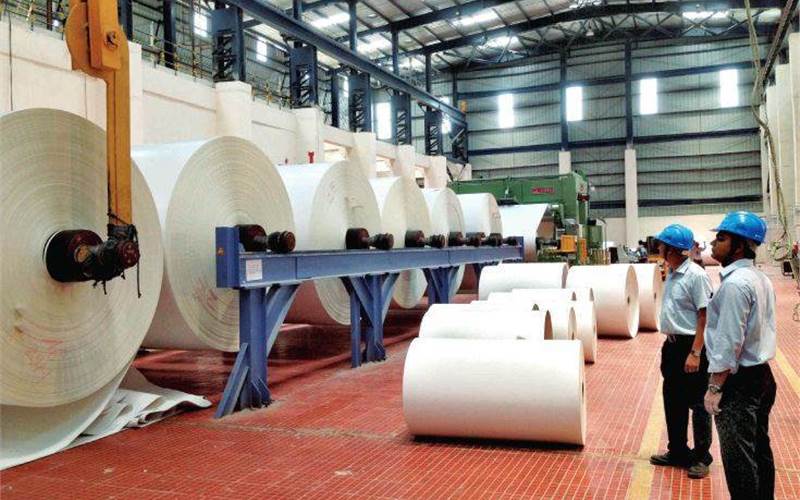IPPTA webinar votes for packaging in a Covid world
Covid-19 hasn’t impacted kraft paper and duplex board production, while newsprint manufacturing is in doldrums. This was the headline announcement during a power-packed Zoom webinar - 15 speakers and 190 delegates - which was hosted by IPPTA on 7 November.
07 Nov 2020 | By Rahul Kumar
Speaker after speaker said, the headwind has turned out to be the tailwind for the packaging industry. This is because the government of India permitted manufacturing of essentials like pharma, FMCG, food and other essential commodities. And so, packaging saw a robust 85% even in the month of April due to pent up demand. The packaging levels have topped 100% levels now.
Pawan Agarwal, managing director, Naini Papers, said, kraft paper grades prices have risen by 15%. He shared his concerns about raw material supply. His advice to paper mills, take a hard look at your assets, also re-look at the bouquet of products the next five months will be tough.
A multi-locational folding carton manufacturer shared with PrintWeek that during the lockdown and subsequently during the pandemic, consumers returned to the big brands they had known for decades. Also, retailers opted to work with multinationals that could offer scale and sophisticated supply chain management during the crisis. And so, some of the big FMCG companies have been reporting their highest growth numbers in years.
Pharma has seen steady growth. Most of the speakers said, health is a top priority these days. And families are investing in over-the-counter medications and supplements. But as per a report in a business daily, Reckitt Benckiser has identified one counter-effect from pandemic prevention measures — a weaker cold and flu season, cutting into medicine sales, as social distancing measures dampen infectious diseases other than coronavirus. Reckitt also predicts a more far-reaching change: lower birth rates, which it says will affect baby formula sales.

Exports have boosted the paper industry
Meanwhile, commercial printing has been impacted since a large proportion of a brand’s budget had moved to digital during the pandemic. Two speakers alluded to the fact that banks, telecom providers, and governmental organisations have been encouraged to switch to digital services. Also a lot of unfounded environmental claims such as ‘go green – go paperless’ have gained in currency. This has been damaging to the commercial print industry which was in a go slow mode since the past 3-4 years.
Anil Kumar of CEO and executive director, Shreyans Industries, spoke on behalf of the paper mills based in Punjab which has been working on "reasonably good capacity" He said, order books have improved but still not good enough. He shared that the demand for books in the educational book market in Ludhiana has diminished by 40-45%. This will have an impact on Kumar says 2021 will be a zero year for the paper industry and the firms should manage losses.
Newsprint manufacturers are facing the worst crisis in their existence. Some of them have begun exploring the possibilities of their paper machines being converted to non-newsprint grades.

Newsprint manufacturers are facing the worst crisis
One challenge was: Prices are suppressed, but the quality quotient has gone up. Expectations from the brand managers plus consumers have shot up. Today, the customers seek the same quality from agro-based mills as they seek from wood-based mills. For this, the mills will have to be managed by competent teams and well-operated machines, plus monitor external factors such as high logistics costs, regulatory and tax burden, high cost of labour and increasing fibre costs in order to make the products competitive.
As Mahesh Gandhi from Hyderabad Kraft Paper Association and Sunil Agarwal, president of GPMA (Gujarat Paper Mills Association), said, Exports have become a crucial feature. Exports are teaching etiquette about how kraft paper reels should be packaged, palletised and despatched to international destinations. Prakash Rathi, president, Maharashtra Paper Mills Association reiterated this, the kraft paper industry is booming. In addition to domestic demand, he said, exports have boosted the paper industry. However, he cautioned, "with the second wave of Covid in Europe, exports to Europe may be a challenge in the next few weeks."
There was talk about launching a new range of food-safe kraft papers including a new translucent paper that can be used as an alternative to single-use plastics. The idea is to target applications like food bags, wraps and sachets; carrier bags and for lamination.
Likewise, Crown Van Gelder is gearing up to make paper using sugar beet fibres on an industrial scale, in what it believes is a world first. This may have sounded like Sci-Fi in the pre-Covid world. But not anymore.
WhatPackaging? Take: India will face fresh challenges including shoring up supply lines. The industry will also need to learn how to launch products when physical retailers, bars and events — which boost the promotion — are curtailed. Also, most of the big international and indeed national brands plan three years ahead. Whether this shall be possible in lieu of the unpredictability of the next six months is a huge concern ...
The news from the majors is disconcerting. As per market reports. Mondelez will discontinue 25% of its product lines. Nestlé is hiving off its water business in North America. Other companies will offload unwanted divisions. Danone is reviewing its product lines and brands.
As Alan Jope, chief executive of Unilever said in an interview in FT, most of the categories in which the group operates normally see growth rates of between 2 and 5 per cent. “Now we’re seeing growth rates that range from minus 40 to plus 25 over the last couple of quarters,” he says. “It’s really unprecedented.”
The scenario in India is better than in Europe. In August, two major European paper manufacturers unveiled restructuring plans that will strip out almost 2 million tonnes of paper capacity and potentially cost well over 1,500 jobs.












 See All
See All